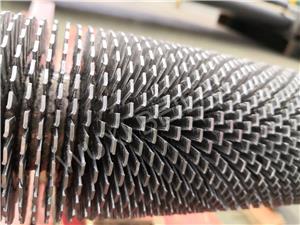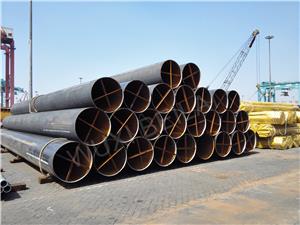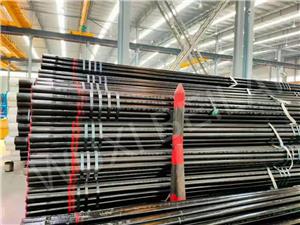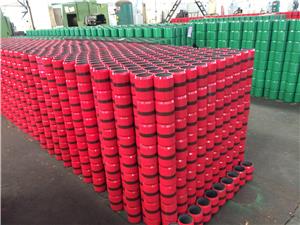Optimizing Oil and Gas Line Pipe for Enhanced Performance and Longevity
Oil and gas line pipe plays a crucial role in the energy sector, serving as the primary conduit for transporting crude oil, natural gas, and refined petroleum products over long distances. Given the extreme conditions in which these pipelines operate, selecting the right materials, manufacturing techniques, and maintenance strategies is essential to ensure efficiency, durability, and compliance with industry regulations.
Key Characteristics of Oil and Gas Line Pipe
The effectiveness of oil and gas line pipe depends on several factors, including material composition, strength, and resistance to corrosion. Some essential characteristics include:
1. High Tensile Strength– The pipe must withstand high pressures without deformation or failure.
2. Corrosion Resistance– Exposure to moisture, chemicals, and varying temperatures necessitates anti-corrosion coatings and materials.
3. Seamless or Welded Construction– Seamless pipes offer superior durability, while welded pipes are more cost-effective for lower-pressure applications.
4. Custom Specifications– Pipes are manufactured to meet industry standards such as API 5L, ASTM, and ISO certifications, ensuring performance and safety.
Types of Oil and Gas Line Pipe
1. Seamless Line Pipe
- Manufactured without a weld seam.
- Suitable for high-pressure applications.
- Offers greater reliability and resistance to stress.
2. Welded Line Pipe
- Produced using Electric Resistance Welding (ERW) or Submerged Arc Welding (SAW).
- More cost-effective than seamless pipes.
- Suitable for medium- and low-pressure applications.
3. Coated Line Pipe
- Includes polyethylene (PE), fusion-bonded epoxy (FBE), and other coatings.
- Prevents corrosion and extends service life.
Applications of Oil and Gas Line Pipe
Oil and gas line pipe is utilized in various environments, including offshore and onshore pipelines. Common applications include:
- Crude Oil Transmission– Transporting raw crude from extraction sites to refineries.
- Natural Gas Distribution– Delivering processed natural gas to residential, commercial, and industrial users.
- Refined Product Pipelines– Moving gasoline, diesel, and jet fuel through extensive networks.
- Subsea Pipelines– Specialized pipelines designed to operate in deep-sea conditions.
Factors Affecting the Longevity of Oil and Gas Line Pipe
Several factors influence the lifespan of oil and gas line pipe, including:
- Environmental Conditions– Pipes exposed to harsh weather, temperature fluctuations, and corrosive substances require enhanced protection.
- Material Quality– High-grade steel ensures better resistance to mechanical and chemical stress.
- Coating and Protection– Advanced coatings prevent rust, chemical damage, and abrasion.
- Regular Maintenance– Inspection and maintenance programs help detect and mitigate early signs of wear and damage.
Industry Standards and Compliance
Oil and gas line pipe manufacturers must comply with stringent industry standards to ensure safety and performance. Some of the widely recognized standards include:
- API 5L– Covers seamless and welded steel line pipe used in transportation systems.
- ASTM A53/A106– Specifies requirements for seamless carbon steel pipes.
- ISO 3183– International standard for petroleum and natural gas pipeline transportation systems.
- DNV-OS-F101– Offshore standard for submarine pipeline systems.
Future Trends in Oil and Gas Line Pipe Manufacturing
As technology advances, the oil and gas industry continues to innovate pipeline materials and construction techniques. Some key trends include:
- Use of High-Strength Steel– Reduces wall thickness while maintaining strength, leading to cost savings.
- Advanced Coatings– Self-healing coatings and nanotechnology enhance pipeline protection.
- Smart Monitoring Systems– IoT-enabled sensors provide real-time data on pipeline integrity.
- Sustainable Manufacturing– Companies are focusing on eco-friendly materials and processes to minimize environmental impact.
Oil and gas line pipe is an indispensable component of the energy infrastructure, requiring careful selection, manufacturing, and maintenance to ensure optimal performance. With advancements in materials, coatings, and monitoring technologies, the industry is poised to improve pipeline longevity and efficiency while maintaining compliance with stringent safety and environmental regulations. Choosing high-quality oil and gas line pipe is crucial for minimizing operational risks and ensuring uninterrupted energy transportation.
By understanding the importance of oil and gas line pipe and staying updated with industry innovations, companies can enhance pipeline reliability and sustainability for the future.




